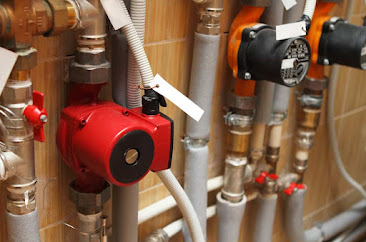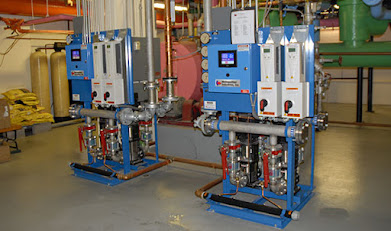Hot Water Recirculation Systems are Beneficial to Health and Comfort
The provision of hot water recirculating system is an essential function of buildings, particularly in regions with severe winters. If a water heating system is correctly constructed, it will provide water at an appropriate temperature while minimizing the amount of energy consumed. In addition, the design needs to eliminate any potential health hazards, such as the formation of the Legionella bacterium. so it is necessary to install hot water recirculating system by expert.
Design an adequate hot water system.
Controlling the flow velocity of the hot water circulation is essential for preventing erosion when using hot water circulation. The Copper Development Association has some recommendations for you, and they are as follows:
8 Ft/sec is the speed at which cold water travels.
5 Ft/sec is the speed at which hot water flows.
2-3 Ft/sec for water with a temperature exceeding 140 degrees Fahrenheit.
How exactly does the recirculation of hot water improve comfort?
Hot Water Recirculating System keep the pipe that carries hot water in a state of continuous motion. When a plumbing fixture is opened, hot water is already quite close to where you will use it. Because of this water-saving solution, plumbing fixtures are no longer left open while waiting for hot water to reach the point of use, eliminating a significant water waste source. Because pumping systems are required to transport less water to the top floors, there is also a reduction in the amount of electricity used.
The temperature of the water can be better controlled through recirculation, ensuring that it is not given in an excessively heated state either. The water in many older plumbing systems is heated to an extremely high temperature before it reaches the fixtures like faucets and showers because the pipes are often obstructed, and the water heaters are too large. Because any water not being used is being delivered back to the heater, you may adjust the temperature of the water in a recirculation system with more precision.
The tenants of the building may find it inconvenient and irritating to wait for hot water because it wastes their time. On the other hand, a recirculation system is always prepared to supply hot water whenever required.
 |
| Hot Water Recirculation Pumps |
Legionella is a type of bacteria that thrives in warm, stagnant water. Exposure to legionella can result in Legionnaires' disease, a more severe form of pneumonia. When plumbing systems are upgraded, it is common for the plumber to leave behind closed piping sections without an exit. One should avoid these dead legs at all costs since they offer a breeding ground for legionella and should therefore be avoided.
Temperatures above 120 degrees Fahrenheit make it difficult for the Legionella bacteria to reproduce, while temperatures beyond 140 degrees Fahrenheit kill them. However, temperatures of this magnitude are unsuitable for showering or any other activity that brings the user into direct contact with water; before sending the hot water to the location where you will use it, diluting it with some cold water is helpful. It is an excellent method. It brings the temperature down to a level where it is safe to be around.
Enhancing the Effectiveness of a System for the Recirculation of Hot Water
In a building with a water heater that has high efficiency and plumbing fixtures that conserve water, a recirculating system will have a cheaper cost of operation than the alternative. There are many different heating systems, but a tankless gas heater or a heat pump will typically provide the most efficiency at the lowest possible operating cost. Electric resistance heaters are the most expensive to operate, whereas gas heaters that contain a storage tank tend to have an efficiency that falls somewhere in the middle.
The most sound advice for lowering the amount of water consumed by plumbing fixtures is to search for the WaterSense label issued by the United States Environmental Protection Agency (EPA). These water-saving fixtures offer a minimum water savings of twenty percent when compared to traditional institutions, and the performance of these water-saving fixtures has been certified by third-party laboratories.
A hot water recirculating system can provide comfort and health conditions while simultaneously optimizing energy usage if it is integrated with an energy-efficient water heater and fixtures certified as WaterSense.
Have a query regarding the hot water recirculation system? Call EZ Plumbing USA. Our experts will be happy to help you.

Comments
Post a Comment